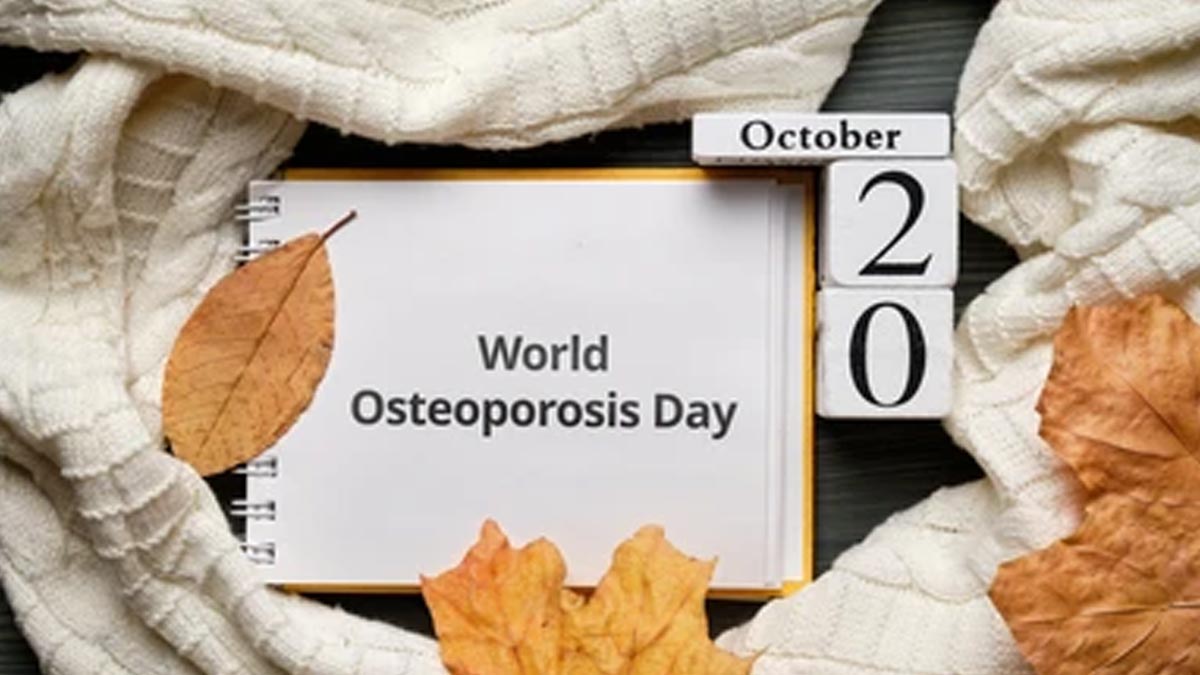
Osteoporosis is a health condition in which your bones become weak and brittle. It is a progressive disease that affects one in three women and one in five men over the age of 50 worldwide. According to the World Health Organization (WHO), osteoporosis is a preventable disease, but it is crucial to incorporate healthy lifestyle choices early on in life.
Table of Content:-
Ahead of World Osteoporosis Day, which is held on October 20 every year, Dr Aashish Chaudhry, Director and Head - Department of Orthopaedics and Joint Replacement, Aakash Healthcare, New Delhi, sheds light on the common risk factors of osteoporosis and shares effective strategies to reduce the risk.
Also Read: Osteoarthritis Of The Hips: Expert Explains Its Types, Symptoms, And Treatment
Who Is Most At Risk Of Osteoporosis?![]()
The risk of osteoporosis increases with age. Bone mass naturally peaks around age 30, after which bone density gradually begins to decline. In older adults, this bone loss speeds up, especially in women after menopause due to a sharp drop in oestrogen levels, a hormone that helps maintain bone strength.
Additionally, the body’s ability to absorb calcium and produce vitamin D, both essential for bone health, also diminishes with age, weakening the bones further. As a result, bones become more weak, brittle, and prone to fractures, especially in weight-bearing areas like the hips, spine, and wrists.
Dr Chaudhry shares that osteoporosis can affect men and women of all ethnicities, although postmenopausal white and Asian women are at the greatest risk.
He adds that men with low testosterone levels, smokers and heavy drinkers, people who have undergone bariatric surgery or those having a parent with a hip fracture as a senior, patients with renal failure, inflammatory bowel illness, rheumatoid arthritis, liver disease, or an eating problem, and those who use oral corticosteroids regularly or other high-risk drugs are also at an increased risk of osteoporosis.
Women, Menopause, And Osteoporosis Risk![]()
It is important to note that menopause, which marks the end of the menstrual cycle and is associated with hormonal shifts, significantly speeds up bone loss and increases the risk of osteoporosis.
According to the International Osteoporosis Foundation, an estimated 20 crore women worldwide are affected by osteoporosis, which includes approximately one-tenth of women aged 60, one-fifth of women aged 70, two-fifths of women aged 80, and two-thirds of women aged 90.
In the run-up to menopause, bone density (thickness) begins to diminish due to reduced oestrogen levels. Dr Chaudhry notes that after menopause, bone density (thickness) begins and continues to diminish due to reduced oestrogen levels.
"Women lose up to 10% of their bone density over the first five years following menopause. Around one in every two women over the age of 60 will have at least one fracture as a result of osteoporosis," he says.
How Lifestyle Changes Can Help Reduce Risk![]()
Lifestyle changes have a huge role to play when it comes to maintaining overall health and wellbeing.
This includes small steps like eating a healthy diet, which includes calcium-rich food consisting of fresh fruit, vegetables, and whole grains coupled with sufficient vitamin D intake.
Vitamin D slows bone loss and reduces the risk of fracture, particularly in elderly persons. Calcium and vitamin D together play a significant role in the prevention of osteoporosis. Adequate vitamin D is required for proper calcium absorption. Vitamin D is generally produced in the skin following exposure to sunshine.
Dr Chaudhry says, “Everyone needs enough vitamin D to maintain good bone health. Experts recommend that men over the age of 70 and postmenopausal women take at least 800 international units (20 micrograms) of vitamin D each day.
Additionally, avoid smoking and limit alcohol intake. Make sure to indulge in regular exercise and involve weight-bearing and strength-training activities.
Also Read: A Gynaecologist Answers The Most Common Questions Asked About Menopause
Role Of Exercise
Exercise can be an effective way to reduce the risk of osteoporosis. A 2005 study published in the journal Sports Medicine found that regular physical activity can increase bone mass and reduce the risk of fractures, especially when it is started early, done at high intensity, and accompanied by sufficient nutrition.
However, researchers noted that the effectiveness of exercise varies depending on factors like age, hormone levels, and nutrient availability.
Dr Chaudhry shares exercises that can help prevent osteoporosis or benefit those who are already living with the condition:
- Dancing, a weight-bearing, impact-loading activity
- Resistance training employs free weights such as dumbbells and barbells, elastic band resistance, bodyweight resistance, or weight-training equipment.
- Tai chi is a type of exercise that improves posture, balance, and body strength.
Bottomline
According to the doctor, while healthy lifestyle habits may help prevent osteoporosis, lifestyle adjustments may not be sufficient if you have lost a significant amount of bone density. That’s when there are numerous drugs to consider. Some can decrease bone loss, while others can help regenerate bone.
Bisphosphonates, calcitonin, RANKL blockers, oestrogen, and drugs that alter the way oestrogen works in the body are all examples of medications that reduce bone loss.
A synthetic version of parathyroid hormone and drugs that suppress sclerostin are two examples of bone-rebuilding medications.
However, it is best to consult your doctor to know if there are any medications that might help you manage your osteoporosis.
Also watch this video
How we keep this article up to date:
We work with experts and keep a close eye on the latest in health and wellness. Whenever there is a new research or helpful information, we update our articles with accurate and useful advice.
Current Version


